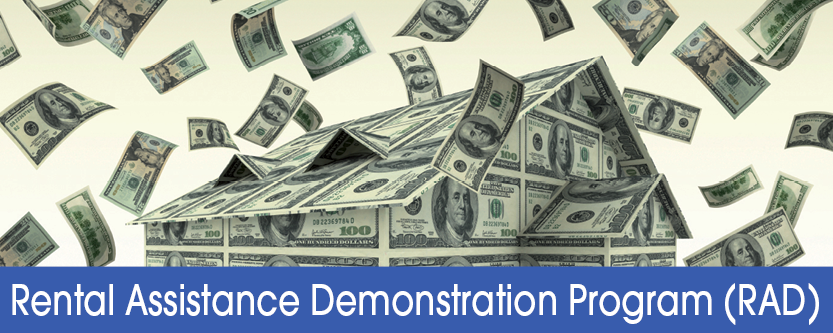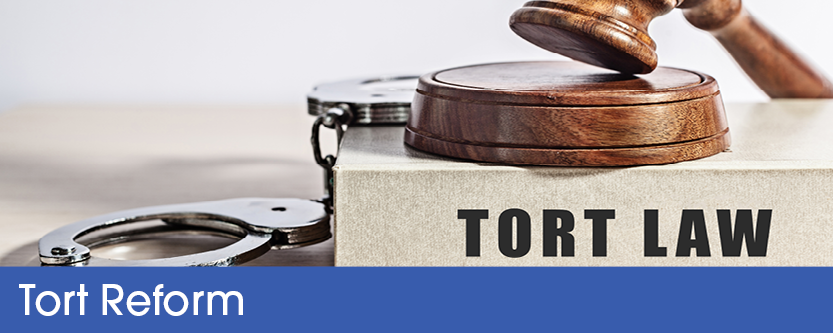Learn about Backgrounds and Positions on Policies Affecting Property Managers
NARPM Governmental Affairs Policy Statements booklet
Background
We have seen an increase in so-called “drive-by” lawsuits, where plaintiffs’ lawyers will barrage well-meaning property owners with threatening demand letters over technical, easily-correctable violations of the Americans with Disabilities Act (ADA) in order to force quick settlements that consist mostly of attorneys’ fees. Such demand letters are usually premised on the payout instead of actually fixing the alleged violation.
Position
NARPM® fully supports the goals of the federal Americans with Disabilities Act (ADA), which seeks to help ensure equal access to public facilities by disabled individuals. NARPM® believes a person’s disability should not be a barrier to public facilities and that all residential property managers should adhere to rules, policies, practices, and services that comply in word, deed, and spirit with the ADA as it applies to their activities. By emphasizing quick payouts to ambitious lawyers over bringing properties into compliance with the ADA, such coercive schemes as these drive-by lawsuits debase the intent of the ADA and enrich unscrupulous lawyers at the expense of the very persons the ADA is intended to protect. Of particular concern to NARPM® members is the effect these schemes have on NARPM® members and their clients who manage and own multi-family residential properties as well as all NARPM® members who work from commercial offices that they own and/or manage. NARPM® requests that Congress enact legislation that would remedy this situation by creating a “notice-and-cure” provision within the ADA, giving property owners accused of not complying with the Act clear notice of the alleged violation and an opportunity to remedy the violation before a lawsuit may move forward.
(February 27, 2020)

Background
Property managers work with tenants to make reasonable accommodations for assistance animals when such accommodations may be necessary to afford a person with a disability an equal opportunity to use and enjoy a dwelling. Further, property managers may request documentation as to the need for accommodations to comply with the law. Property managers have seen an increase in tenant requests for assistance animals over the years. HUD has recently released updated guidelines that have added clarity to the process for property managers and landlords.
Position
NARPM® supports efforts at the federal and state levels to provide clearer guidelines as they relate to qualifications for the need of an assistance animal, to establish guidelines for the proper certification and documentation from valid authorities (with proper licensure identification) for the need for such animals, and to establish penalties for falsifying documents or providing fraudulent documentation without the proper certification of need.
(April 23, 2020)

Background
Many states are now requiring carbon monoxide detector installations where appropriate and in accordance with the manufacturer’s instructions prior to tenant occupancy, and many states now have addendums to the lease agreement informing the tenant of their responsibilities to maintain and immediately notify of any deficiency in the detectors. Common sense dictates protocols such as annual preventative maintenance inspections of the exterior and interior conditions of the home with particular attention being paid to carbon monoxide detectors so that they are operating as intended and/or replaced if necessary. Annual furnace and gas appliances inspections that include safety certifications for being carbon monoxide free are certainly regarded as a “best practice” for professional residential property managers. However, even an annual inspection will not always catch the problem once it occurs. It is recommended that carbon monoxide detectors be installed and maintained in all residential rental homes in accordance with state law. It is also recommended that property managers notify tenants through their lease agreements that tenants should regularly test their carbon monoxide and smoke detectors and replace the batteries as required.
Position
As members of NARPM® we have a stated duty to provide a safe dwelling place for our tenants and an implicit obligation to educate and protect our clients and tenants about the dangers of carbon monoxide poisoning, “the silent killer.” We are residential property management professionals, and the public has a reasonable expectation that we will make the necessary provisions for safety in the homes we manage and they will inhabit. Moreover, we support common sense building and fire codes that provide uniform installation and inspection standards for carbon monoxide and smoke detectors in residential rental properties.
(February 27, 2020)

Background
NARPM members play a variety of roles with respect to common interest communities. For some, management of common interest communities is a significant portion of their property management business. For others, it means managing dwelling units that are part of a common interest community. And for many, it encompasses both roles.
Position
We believe that laws and regulations governing common interest communities must strike a careful balance between the rights and interests of the association, association managers, property owners, and property managers. We oppose actions that would limit either the ability of property owners to rent their homes or the ability of property managers to represent property owners in any function of the association if consented to by the property owner, and we firmly believe that any action that does impose these types of limits should only be allowed in the covenants of the common interest community.
(April 22, 2021)

Background
It is a fundamental component of the residential landlord-tenant relationship that residents should be entitled to the safe and quiet enjoyment of their residential dwellings and not be exposed to unabated criminal activity. Such activity negatively affects the quality of life for tenants and the surrounding community, devalues the property, and causes liability for both the property owner and property manager. Moreover, property managers can be limited by state law in their ability to take action until the time of conviction, often with ongoing criminal activity continuing unabated and tenants living in fear.
Position
NARPM® believes that landlord-tenant laws should empower landlords to address criminal activity by tenants or invitees promptly and decisively when such conduct breaches the rights of other tenants and/or puts them at potential risk.
(February 27, 2020)

As state and local governments across the nation struggle to identify sources of revenue to pay for services and infrastructure, they invariably turn to taxes and fees that single out real estate, especially new construction. Such proposals take the form of things like flip fees, impact fees, cash proffers, and transfer taxes.
Position
NARPM® opposes discriminatory taxes and fees like flip fees, impact fees, cash proffers, and transfer taxes that single out real estate investors or new housing in order to pay for services and infrastructure. Such initiatives artificially inflate the cost of housing, making housing less affordable, and they raise the cost of business, potentially impacting investment in asset class.
(February 27, 2020)

Disparate impact occurs when a business practice or policy has a disproportionately adverse effect on a protected class under the Fair Housing Act, regardless of whether the discrimination was intentional. This is of particular interest with regard to tenant screening.
Position
NARPM® believes in a housing market free from discrimination, and we strongly oppose the use of practices that have a disparate impact on protected classes as way to avoid compliance with fair housing laws. We believe housing providers should have a safe harbor for actions that have a legitimate business purpose and for which that purpose cannot be accomplished in a readily identifiable and not unduly burdensome means with a less discriminatory impact.
(February 27, 2020)

Background
One of the remedies a property owner has in the event of noncompliance with the terms of a lease agreement is eviction of the tenant. Laws and rules governing eviction are largely a function of state and local governments. In recent years, we have seen an increase in efforts by tenant advocates to re-write landlord-tenant laws in ways that lengthen the amount of time or otherwise make it more difficult for landlords to evict tenants who are not complying with the terms of a lease. Likewise, we have seen efforts to enact so-called just-cause eviction (JCE) laws that attempt to limit evictions to a prescribed list of situations. And, we have seen efforts to limit the ability of a landlord to review the complete eviction history of an applicant. Moreover, during the COVID-19 pandemic, numerous local and state governments as well as the federal government enacted various types of eviction moratoria. In a number of instances, these moratoria were not even coupled with rental assistance to protect renters from growing debt and protect property owners from lost income.
Position
NARPM® recognizes that eviction is a last resort when other efforts to resolve lease violations have failed, but we also recognize that eviction is a necessary tool to protect the interests of the property owner, deter bad tenant behaviors, and to help ensure fairness and safety for other residents. We believe that eviction laws should respect the terms of a lease and should strike a fair balance between the rights and interests of landlords and tenants. We oppose efforts to lengthen the amount of time or otherwise make it more difficult for landlords to evict tenants who have broken the terms of the lease. The process should be fair, transparent, consistent, and predictable for all parties. NARPM® believes in full access to a complete and accurate eviction history of an applicant without limitation on evaluating previous court records. Legislation placing limitations on the ability to review an applicant’s eviction court records would be a significant detriment to housing providers as they utilize these records to assess applicants’ capacity to pay rent or fulfill other responsibilities under a lease. Likewise, we oppose so-called just cause eviction (JCE) laws or similar initiatives that eliminate a property owner or operator’s right to serve a non-renewal notice on a resident at the end of the lease term or that would require an owner to “show cause” and obtain a court order to terminate a lease. Finally, NARPM opposes government-imposed eviction moratoria. While well-intentioned, eviction moratoria only put renters at greater long-term risk through the accumulation of greater debt, and they have a very drastic effect on many property owners in the form of lost rental income, an effect that is most acute for smaller property owners. Policies like eviction moratoria only serve to drive investors out of the marketplace, decreasing the supply of affordable housing choices for American families.
(April 22, 2021)

Background
Federal and state tax policy has a significant impact on both property management firms and the investors they represent. There are numerous federal and state tax incentives that encourage beneficial investment in American communities. These incentives are a powerful tool for communities to promote investment in traditionally underserved communities.
Position
NARPM supports tax policies that encourage investment in American communities. This includes programs like 1031 exchanges, the Low-Income Housing Tax Credit (LIHTC), and the Qualified Opportunity Zone Program. Likewise, we support additional tools to encourage investment, including but not limited to items such as a second Opportunity Zone program and the creation of what is known as a Middle-Income Housing Tax Credit.
(April 22, 2021)

Background
Floods are the most common natural disaster in the United States, and the National Flood Insurance Program (NFIP) is a critical tool for the rental industry to mitigate some of the financial risk posed by them. Under existing law, apartment properties in high-risk flood areas with federally-regulated and insured mortgages must purchase flood insurance. The NFIP is especially important because there is largely no readily available private flood insurance market to most property owners. The NFIP ensures that affordable flood insurance is available at all times in all market conditions for every at-risk property. Retaining access to affordable, quality flood insurance through the NFIP is a top priority for the housing industry as it seeks to not only protect property investments but also maintain housing affordability given the nation’s current shortage.
Position
NARPM® believes a strengthened National Flood Insurance Program (NFIP) combined with a robust private market is needed to maintain access to flood insurance in all markets over the long term so that it remains a viable option for property owners. For this reason, NARPM® supports the long-term reauthorization of the NFIP together with reforms to ensure its ongoing sustainability for property owners.
(February 27, 2020)

Background
Many NARPM® members are small businesses or self-employed. A significant number of America’s uninsured citizens are self-employed individuals or work for small business employers who cannot afford to offer quality health insurance benefits to their workers. This leaves a number of NARPM members in the posture of paying high premiums for high deductible policies or going without health insurance.
Position
NARPM® supports the passage of healthcare reform measures that will address the access and affordability problems that the self-employed and small business employers face when looking for health coverage, including but not limited to, authorization of association health plans that allow members of professional trade associations to be considered a group for purposes of purchasing insurance.
(April 23, 2020)

Background
In recent years, as technology has made it more efficient to manage spatially dispersed properties, the number of institutional investors in the single-family asset class has grown significantly. In addition to acquisition of existing properties, institutional investors have developed build-to-rent communities. Motivations vary among investors, based on differing business models, ranging from long-term profits from rental income, to medium term capital gains from acquisition and resale, to short-term gains from mass acquisition and sale. Critics argue that regardless of motivation, institutional investment in single-family properties raises the cost of housing and pushes out mom-and-pop investors and owner-occupant buyers, thereby limiting their private property rights and inhibiting smaller investors’ and owner occupants’ ability to acquire and build wealth. These concerns have led to increased regulatory attention for institutional investors and calls to limit rent-to-own communities. It has also given rise to differing rules based on the number of housing units owned by one owner.
Position
NARPM® understands the concerns that the changing nature of housing investment can create. While public policy must be written in a context that reflects the current reality, policymakers must be careful to avoid overreactions that have unintended consequences and create ripple effects that would harm other investors and disincentivize investment in rental housing.
We urge extraordinary caution with respect to regulatory schemes that create differing sets of rules for different types of owners. Such arrangements, while well-intentioned, create havoc for property managers whose clientele includes owners of all types. Likewise, we urge policymakers to tread carefully before succumbing to the temptation to enact policies that discriminate against or are targeted at institutional investors and rent-to-own communities. Such policies invariably affect other investors and property owners. Often, these policies have the inverse effect of causing small landlords to leave the market, thereby working against the very purpose for which such policies are enacted.
(January 18, 2024)

Background
Following the adoption of the Lead Based Paint Disclosure requirements for housing constructed prior to 1978 by the Environmental Protection Agency (EPA) in 1996, we have seen increasing pressures for state and local governments to enact new laws for pre-1978 housing that would do one or more of the following:
- Mandate lead paint inspection of all housing built prior to 1978.
- Certification of lead free status at each change of tenancy or ownership.
- Abatement, encapsulation and/or removal of all lead paint hazards.
- Tenant relocation and other expenses.
- Assign legal liability for discovered lead poisoning in children to the owner of the property where the child resides without determination of where the lead poisoning occurred.
All of the proposed legislation would result in increased responsibility, liability and costs to property owners and property managers.
Position
NARPM® supports disclosure requirements for lead based paint, with appropriate fines and penalties for noncompliance. We do not support the enactment of legislation requiring inspection, abatement or tenant relocation at the property owner’s expense. We do support proposals and studies to provide clear, consistent standards to property owners and managers for their use. We also support the following in dealing with lead paint problems: “Certification Standards” for lead paint inspectors, liability relief to property owners for resolving lead paint problems, and appropriate tax relief to offset the costs of any needed compliance. Proposed legislation should be uniform in each state, and include provisions directed at preserving older properties from costs that would make them uneconomical to own and operate.
(February 27, 2020)

Background
Land use decisions have traditionally been a function of local governments across the nation. In many instances, that has allowed for constructive dialogue and collaboration with regard to how communities plan for future growth. Unfortunately, it is becoming more commonplace for local governments to use the land use process to hinder the development of new housing units of all types, including rental units and units for those at lower price points. These hindrances can take the form of draconian regulations that raise the cost of new home production, prohibitions on certain types of housing units, and planning and zoning processes that take years to complete. The net result of these practices is an affordable housing crisis in many communities.
Position
NARPM® recognizes the important role that community-based planning plays in creating desirable communities where people want to live, work, and raise a family. But, we also recognize that the politicization of the local land use process can have disastrous effects on many families, and it can greatly inhibit their housing opportunities. Overall, local land use policies should be driven by sound planning, science, engineering, and the future needs of the community, and they should be geared toward the development of a variety of well-built, affordable housing choices for both current and future residents. Indeed, the key element in addressing the affordable housing crisis is supply. Local planning and zoning processes should take months, not years, and the process must be marked by fairness, consistency, and predictability. Moreover, the entire process must be rooted in the preservation of property rights. While this is primarily a local issue, we support efforts on the state and federal level to encourage localities to provide more affordable housing choices and to hold localities accountable for the choices they make.
(February 27, 2020)

Background
The Low-Income Housing Tax Credit (LIHTC) is a public/private partnership where state housing agencies issue credit allocations to developers who then sell the credits to investors. Investors receive a dollar-for-dollar reduction in their federal tax liability over a 10-year period, and developers invest the equity raised to build or acquire rental properties, allowing property managers to operate the properties at below-market rents for qualifying families.
Position
The LIHTC program is a necessary component of the nation’s affordable housing continuum. In order to improve the program, we support: (1) making permanent the increased credit authority enacted in March 2018 to enable the production of new units; (2) establishing a minimum 4 percent credit rate; and (3) maintaining local flexibility to use the high housing cost adjustment when calculating Area Median Income (AMI).
(April 23, 2020)

Background
The Fair Housing Act prohibits discrimination on the basis of familial status, the presence or expected presence of children in a household. The Fair Housing Act exempts from its coverage the application of any reasonable local, state, or federal restrictions regarding the maximum number of occupants permitted to occupy a dwelling. Uncertainty in the application of the Fair Housing Act increases the likelihood that property managers will find themselves defending a discrimination charge in the enforcement of reasonable occupancy standards. Occupancy standards are designed to protect the safety and health of residents and to protect the building and its facilities. Property managers find themselves caught between the need to limit the maximum number of occupants in a unit and their commitment not to discriminate on the basis of familial status. Most standards based on square footage are designed to protect the health and safety of the residents and allow greater density that is reasonable, taking into consideration wear and tear on the property and the ability to service the residents. In some jurisdictions, local governments have enacted strict occupancy limits, which are based on a one or two people per bedroom standard. These standards limit the property owner and manager’s ability to allow more people in a unit when the market conditions warrant a higher occupancy level.
Position
NARPM supports the right of property owners and property managers to restrict occupancy in a reasonable manner that is consistent with the letter and spirit of the Fair Housing Act and believes that an occupancy limit of two adults per bedroom is reasonable under the Fair Housing Act. Moreover, NARPM® believes that property managers should be shielded from discrimination charges that arise form enforcing any occupancy standard that is enacted by a state or locality.
(February 27, 2020)

Background
The COVID-19 Pandemic has demonstrated how the unique nature of the rental housing industry puts property managers and their employees on the front lines even during times of emergency, when the need for stable housing is the most pronounced. Housing providers continue to address employee and resident concerns and do all they can to mitigate the impacts of the virus in their communities, even as many owners and operators continue to struggle.
Position
We must do all that we can to protect our property managers and the residents with whom they come in contact from this deadly virus. In order to ensure continuity of housing, property management should be designated as an essential service during a declared state of emergency, and when appropriate, property managers should be given priority for mitigation measures, including vaccinations. Moreover, property managers and owners who exercise due diligence during declared states of emergency and pandemics should be protected from liability, absent gross negligence.
(April 22, 2021)

Background
Rent control is a government-enforced price control measure limiting the rent that property owners may charge in market rate rental housing. Rent control laws and regulations mandate an artificial cap on rent, without monetary investment or compensation by the governing jurisdiction.
Position
NARPM® unequivocally opposes rent control in all of its forms and styles. Rent control distorts the housing market by acting as a deterrent and disincentive to develop rental housing, and it expedites the deterioration of existing housing stock. With little to no ability to earn a profit, investors will shift their investments to other non-rent regulated jurisdictions. In practice, these policies have the effect of increasing the cost of all housing by forcing a growing community to compete for fewer housing units, and reducing the quality of rental housing. While done under the guise of preserving affordable housing, rent control hurts the very community it purports to help by limiting accessibility and affordability, and in doing so, inhibits the economic growth of local communities. Moreover, such misguided policies also cause investors to move their assets to other classes, thereby potentially resulting in the undercapitalization of residential rental property.
(February 27, 2020)
.png)
Background
One policy tool for preventing evictions, especially in emergency circumstances, is the provision of rental assistance by local, state, and federal governments. There are differing approaches to how this aid is distributed. Sometimes it goes to the renter, and sometimes to the property owner. It can flow through public agencies or private providers.
Position
We believe that rental assistance is one of the most effective means of assisting renters who are at risk of eviction. Unlike solutions such as eviction moratoria or rent forgiveness, that put renters further into financial peril and/or push investors out of the market, Rental assistance prevents evictions, and it protects renters and property owners. For that reason, we strongly support rental assistance as the best means to help renters at risk of eviction for non-payment of rent. We believe that such assistance should flow directly to the landlord on behalf of the renter, and we believe that the landlord should have the ability to apply for rental assistance on behalf of the renter. To the extent possible, the application and distribution of rental assistance should be as consistent as practical across the nation or the state/locality distributing the aid, and rental assistance should not contain conditions that effectively force changes to landlord-tenant law. Moreover, in addition to rental assistance in the form of payments, we support the establishment of a refundable tax credit for landlords who forgive rent for renters in danger of eviction for non-payment of rent.
(April 22, 2021)

Background
The Rental Assistance Demonstration (RAD) program allows PHAs to convert public housing properties at risk of obsolescence or underfunding into project-based vouchers or rental assistance contracts under the Section 8 program. In doing so, housing authorities are able to leverage private capital to address capital needs and work with private sector developers and managers to preserve their affordable housing stock.
Position
Government programs alone cannot meet market demand for affordable housing choices for American families. Private investment and public-private partnerships are also necessary. NARPM supports RAD and other creative ways to attract private sector investment in delivering safe, affordable housing.
(April 23, 2020)

Background
Localities across the country have considered or enacted ordinances that mandate inspections for rental housing. These programs are sold as being necessary to ensure public health and safety, mitigate blight, and abate nuisance and overcrowding through the enforcement of building and health codes.
Position
NARPM opposes mandatory rental housing inspection and registration ordinances because doing so places an unnecessary financial hardship on owners, infringe on personal privacy rights, and single out rental housing while excluding other property types. We believe that existing building codes and zoning ordinances contain the tools needed to protect the public welfare without resorting to these sorts of ordinances, and as such, we encourage policymakers to consider other proven approaches that target chronic code violations.
(April 23, 2020)

Background
A number of localities across the nation have or are considering the establishment of renters’ commissions. In most instances, these proposals are driven by tenant advocates as a means to effect changes in the landlord-tenant relationship. Unfortunately, these types of commissions can be one-sided.
Position
NARPM understands the importance of dialogue about housing issues at all levels of government, and as such, encourages local governments to engage stakeholders as a means of developing and implementing policies that promote a range of well-built affordable housing choices in their communities.
Such groups should focus on wide-ranging strategic housing issues and types of housing, and at a minimum, should include a balance of housing producers, providers, and consumers in addition to other stakeholders, and they should be geared toward building consensus around balanced policies rather than serving as a forum to advance the interests of one group of stakeholders. Moreover, such groups should be entirely advisory and should have absolutely no regulatory, legislative, or subpoena power.
(June 23, 2022)

Background
The growth of individual homeowners using online short-term rental platforms to rent their homes or rooms in their homes out has led to an influx of state and local governments rushing to regulate short term rentals. Policymakers and stakeholders have worked to balance the property rights of homeowners with the legitimate health, safety, and welfare concerns of the community. Moreover, issues of taxation and regulatory fairness with respect to the hotel and lodging industry have added to the challenges in resolving the issue. Caught in the middle are property managers who for years have managed short-term rentals on behalf of property owners, especially in areas where vacation rentals are prevalent and who are rightfully concerned that regulations developed as a reaction to the increase in short-term rental activity via online platforms will negatively affect them and their clients.
Position
NARPM® recognizes that there must be a careful, balanced approach to how state and local governments address the issue of short-term rentals. In striking that balance, however, the basic underpinning of any regulatory scheme affecting short-term rentals must be premised on protecting the property rights of homeowners. NARPM® opposes attempts to enact discriminatory policies that treat properties differently if they are used for short-term rentals versus longer term rentals unless the nature of the short-term rental itself gives legitimate rise to the proposed policy. NARPM® supports efforts, such as state or local registries, designed to ensure that all short-term rentals pay the same transient occupancy taxes as other similarly situated hotels and lodges as well as ensuring that property used for short-term rentals is held to the same zoning and other standards as other rental properties of similar scope and size of occupancy. NARPM® also believes that properties managed by a professional property manager in accordance with the laws of the state in which the property is located should be exempt from any registry that might be otherwise established by the state or locality.
(February 27, 2020)

Background
The Section 8 Housing Choice Voucher Program has long served as America’s primary method of rental assistance. Funded by the U.S. Department of Housing and Urban Development and administered by local public housing authorities, the program provides subsidized rents for qualifying low-income families in private rental housing. This public-private partnership has the potential to be one of the most effective means of addressing our nation’s affordable housing needs and supporting mixed-income communities. However, the program’s potential success is limited by too many inefficient and duplicative requirements, which discourage private providers from accepting vouchers. And, there are serious concerns about tenants who allow utilities to lapse. The ongoing challenge of providing a variety of affordable housing choices to American families has led some policymakers to enact state or local laws or ordinances that add “source of income” as a protected class under prevailing fair housing laws. In addition, this kind of protection has also been proposed at the federal level. Under these laws and proposals, source of income is defined to include housing supports such as Housing Choice Vouchers (HCV’s, i.e., “Section 8”). The aim of these policies is to compel more landlords to participate in the Section 8 program.
Position
NARPM® recognizes that the portability of Housing Choice Vouchers provides that program with an important place in the spectrum of housing supports that are provided to American families and that they play an important role in helping to deconcentrate poverty and afford more families an opportunity to live in neighborhoods of their choice. Moreover, NARPM® recognizes that the HCV program also helps protect tenants from being trapped in substandard housing or exploitative circumstances. NARPM® also recognizes that there are legitimate concerns about the HCV program. Examples include the property inspection process, the required HAP contract that supersedes the landlord’s standard lease; FMR’s that are too low for a given area; the practice of withdrawing funds from the property manager without prior notice when a tenant is removed from the program; and the perceived apathy of program staff toward fraud or bad tenant behaviors, among other items. Given the concerns that have been raised about the HCV program by landlords and property managers, NARPM® strongly opposes any legislation or regulation that would have a net effect of forcing landlords to participate in the housing voucher program. Such opposition would include any proposal to include source of income as a protected class under fair housing laws. NARPM® believes that these kinds of proposals not only force landlords into well-meaning but flawed arrangements, but also violate a property owner’s right to contract in that they effectively force the property owner to enter into a non-negotiable contract with the government. In order to encourage more landlords to participate in the program, NARPM® believes that the inspections process and the landlord-tenant relationship be governed by the existing building codes and landlord-tenant laws in the state/locality where the property is located. This would create more consistency, fairness, and predictability for property managers and owners. NARPM® also supports more localization of FMR’s so that they more closely match prevailing rents in a given community. And, NARPM® supports income tax credits for property owners in high opportunity census tracts who rent to voucher holders. NARPM® believes that it is the responsibility of a subsidized tenant, and not the property manager, to ensure that utility service is maintained in the tenant’s unit by providing regular and timely payment of utility bills when service is provided directly to the tenant. NARPM® also believes that tenants who fail to maintain utility service present a danger to themselves and the property and should be duly and expeditiously evicted. In order to comply with the housing quality standards associated with subsidy programs, managers of subsidized housing should be notified by utility companies when the utilities of a subsidized tenant are turned off for failure to pay. NARPM® believes that it is unfair for HUD or other agencies to discontinue the subsidy when housing managers are not notified by utility companies and are unaware that utilities have been discontinued. When utility companies refuse to notify managers that utilities have been turned off, HUD should continue the subsidy until the tenant is duly evicted for failure to maintain utility service.
(February 27, 2020)

Background
Like any businessperson, property managers must be mindful of their legal liability. In an era of opportunistic trial lawyers, every property manager is only one frivolous lawsuit away from being put out of business.
Position
NARPM® supports efforts on the federal and state levels to ensure that our members can do business in a fair, balanced, and predictable legal environment, including items such as punitive damages caps, limits on contingency fee lawsuits, and laws that would require prompt filing of lawsuits. Moreover, NARPM opposes limits on the ability of property managers and landlords to settle disputes through alternative methods such as arbitration and mediation. Finally, property managers and owners who exercise due diligence during declared states of emergency and pandemics should be protected from liability, absent gross negligence.
(April 22, 2021)

Background
Fungi are present almost everywhere in indoor and outdoor environments. Concern about indoor exposure to toxic mold has been driven by a few well publicized cases that have increased public awareness that exposure to toxic mold may cause a variety of health effects and symptoms, including allergic reactions.
Position
NARPM® encourages the adoption of state laws that will provide a defense to claims against property managers who have truthfully disclosed any known mold problems or conditions and provided buyers/tenants with specified disclosure information regarding mold, consistent with the ordinances of the state where they are located.
(April 23, 2020)

Background
One of the most key components to ensuring an abundant supply of high-quality housing choices is the provision of transportation infrastructure to serve the residents of those homes.
Position
NARPM® supports significant investment at the federal, state, and local levels in multimodal transportation infrastructure appropriate in scale to the community being served. Moreover, we recognize that such investment is critical for connecting American families to economic opportunities. Land-use policies that coordinate housing and transportation investment will allow a greater number of people better access to jobs and amenities, and they allow housing to be developed at densities that help provide a wide range of affordable choices for consumers.
(April 23, 2020)
Policy statements
- ADA Lawsuit Reform
- Assistance Animals
- Carbon Monoxide Detectors
- Common Interest Communities
- Criminal Activity in Rental Housing
- Discriminatory Real Estate Taxes and Fees
- Disparate Impact
- Evictions
- Federal and State Tax Incentives
- Flood Insurance
- Health Care
- Institutional Investment
- Lead-Based Paint
- Local Land Use Policies
- Low Income Housing Tax Credit (LIHTC)
- Occupancy Standards
- Pandemic Response
- Rent Control
- Rental Assistance
- Rental Assistance Demonstration Program (RAD)
- Rental Inspection and Registration Ordinances
- Renter Commissions
- Short Term Rentals
- Section 8 and Source of Income
- Tort Reform
- Toxic Mold
- Transportation
